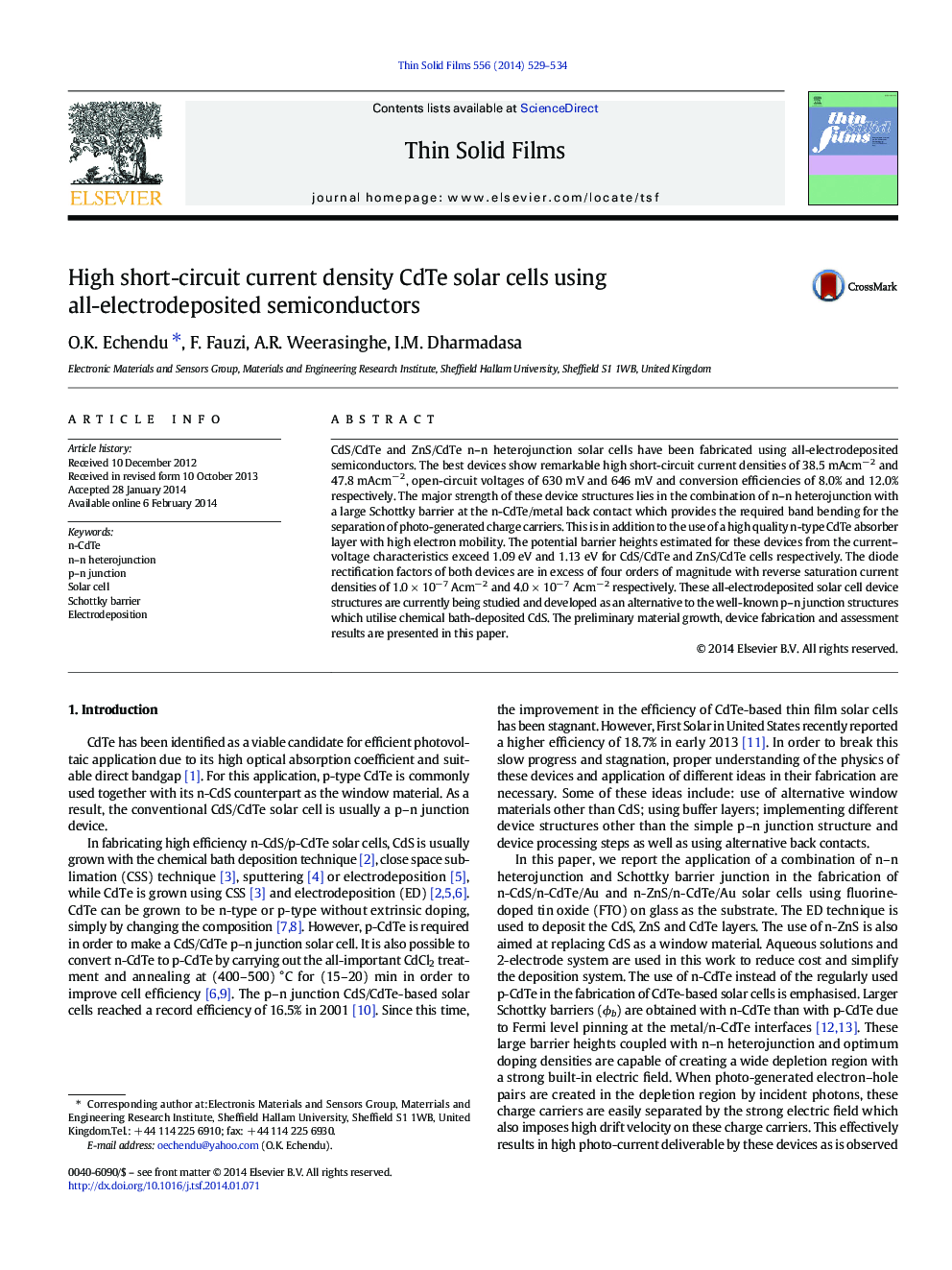| Article ID | Journal | Published Year | Pages | File Type |
|---|---|---|---|---|
| 8035260 | Thin Solid Films | 2014 | 6 Pages |
Abstract
CdS/CdTe and ZnS/CdTe n-n heterojunction solar cells have been fabricated using all-electrodeposited semiconductors. The best devices show remarkable high short-circuit current densities of 38.5 mAcmâ 2 and 47.8 mAcmâ 2, open-circuit voltages of 630 mV and 646 mV and conversion efficiencies of 8.0% and 12.0% respectively. The major strength of these device structures lies in the combination of n-n heterojunction with a large Schottky barrier at the n-CdTe/metal back contact which provides the required band bending for the separation of photo-generated charge carriers. This is in addition to the use of a high quality n-type CdTe absorber layer with high electron mobility. The potential barrier heights estimated for these devices from the current-voltage characteristics exceed 1.09 eV and 1.13 eV for CdS/CdTe and ZnS/CdTe cells respectively. The diode rectification factors of both devices are in excess of four orders of magnitude with reverse saturation current densities of 1.0 Ã 10â 7 Acmâ 2 and 4.0 Ã 10â 7 Acmâ 2 respectively. These all-electrodeposited solar cell device structures are currently being studied and developed as an alternative to the well-known p-n junction structures which utilise chemical bath-deposited CdS. The preliminary material growth, device fabrication and assessment results are presented in this paper.
Related Topics
Physical Sciences and Engineering
Materials Science
Nanotechnology
Authors
O.K. Echendu, F. Fauzi, A.R. Weerasinghe, I.M. Dharmadasa,
